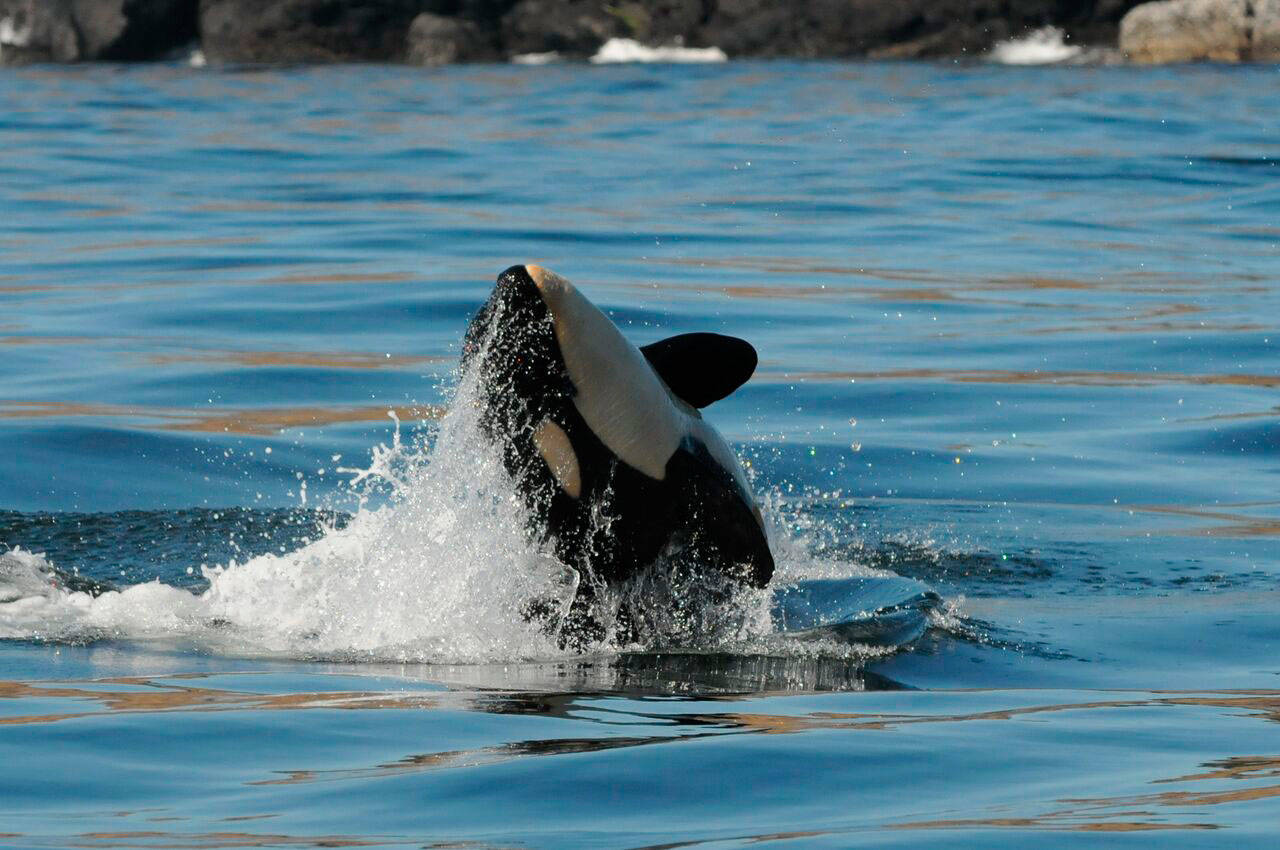A missing adolescent orca has likely lost her fight against illness and emaciation.
On Sept. 13, Center for Whale Research staff stated that Southern resident killer whale, J50, is presumably deceased, though no body has been found.
The endangered species population now totals 74 whales, the lowest number in almost 30 years.
National Oceanic Atmospheric Administration Fisheries personnel confirmed on Sept. 15 that they are no longer “actively searching” for the 3-year-old orca.
J50 has not been seen since Sept. 7. Researchers recently spotted her pod, including her mother J16, without J50.
NOAA staff searched for the missing orca in both U.S. and Canadian waters through Sept. 14, with the help of the West Coast Marine Mammal Stranding Network, the U.S. Coast Guard and local airlines. A NOAA representative said mariners have received a message to continue to look for J50’s body, whether alive or dead. Sightings can be reported to 1-866-767-6114.
According to the Coast Guard, NOAA assumed that J50 may be alive, but lagging behind her pod. If they found her, Coast Guard staff planned to establish a temporary perimeter around the orca while NOAA personnel responded.
To Center for Whale Research Founder Ken Balcomb, J50’s presumed death was a result of inaction.
“… Humans convene task forces and conference calls that result in nothing, or worse than nothing, diverting attention and resources from solving the underlying ecological problems that will ultimately make this once-productive region unlivable for all,” he said.
Last March, Washington Gov. Jay Inslee used an executive order to create a task force to protect both Chinook salmon and Southern resident killer whales. County residents, including Balcomb, San Juan County Councilman Jamie Stephens and Washington state Sen. Kevin Ranker, D-Orcas, are part of the 46-member task force. The group has planned give final recommendations on how to protect the endangered orcas by November.
Rescue efforts for J50 have been underway since August by NOAA Fisheries and Oceans Canada with assistance from the Lummi Nation. J50, who was 13 feet long and weighed about 550 kilograms, was described by researchers as severely emaciated with a possible infection near her blowhole.
Rescue teams administered an antibiotic to J50 through a dart, as well as released live Chinook in front of her pod. A dart of medicine hit J50 on Aug. 9, but it partially bounced off, meaning only half of the dose went into her system. On Aug. 12, live medicine-free Chinook were released about 50-100 meters ahead of J pod to test if antibiotics could be delivered that way. However, none of the orcas were seen eating the salmon.
To Balcomb, more Chinook is the only answer to increase the endangered population.
“This is what extinction looks like, when survival is threatened for all by food deprivation,” said Balcomb. “The Southern resident killer whales’ scarce presence in the Salish Sea is another indication that sufficient food is not available for them here, or along the coast. Natural salmon runs must be restored.”
The Center for Whale Research has counted the Southern resident killer whale population since 1976 when it was at its lowest at 71. The population reached today’s count at 74 around 1985 but peaked at 98 in 1995.
In July, the orca, J35, gave birth, but the calf died soon after. The calf was not added to the population counts because of its short life duration. Afterward, its mother carried her dead offspring on her forehead for an unprecedented 17 days, and about 1,000 miles. Last June, the 23-year-old L92 was also presumed dead after being missing.
“The message brought by J50, and by J35 and her dead calf a few weeks ago, is that the [species is] running out of reproductive capacity, and extinction of this population is looming,” said Balcomb.
To view NOAA’s updates on J50, visit bit.ly/NOAAJ50J35. For more info on the Center for Whale Research, visit www.whaleresearch.com.
Journal reporter Heather Spaulding contributed to this article.




